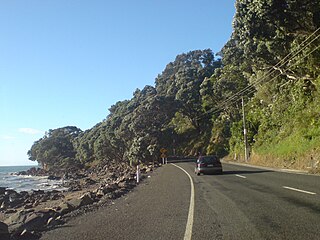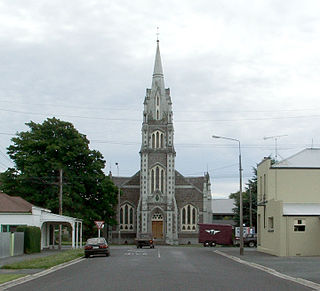Demographics
Statistics New Zealand describes Mahurangi West as a rural settlement, which covers 0.37 km2 (0.14 sq mi) [1] and had an estimated population of 140 as of June 2024, [2] with a population density of 378 people per km2. Mahurangi West is part of the larger Puhoi Valley statistical area. [6]
Historical population| Year | | |
|---|
| 2006 | 75 | — |
|---|
| 2013 | 90 | +2.64% |
|---|
| 2018 | 129 | +7.47% |
|---|
| 2023 | 117 | −1.93% |
|---|
The 2006 population is for a smaller area of 0.27 km2.
Source: [7] [8] |
Mahurangi West had a population of 117 in the 2023 New Zealand census, a decrease of 12 people (−9.3%) since the 2018 census, and an increase of 27 people (30.0%) since the 2013 census. There were 57 males, 60 females and 3 people of other genders in 51 dwellings. [9] 7.7% of people identified as LGBTIQ+. The median age was 60.3 years (compared with 38.1 years nationally). There were 12 people (10.3%) aged under 15 years, 6 (5.1%) aged 15 to 29, 60 (51.3%) aged 30 to 64, and 42 (35.9%) aged 65 or older. [8]
People could identify as more than one ethnicity. The results were 92.3% European (Pākehā), 7.7% Māori, and 10.3% Asian. English was spoken by 97.4%, and other languages by 7.7%. The percentage of people born overseas was 20.5, compared with 28.8% nationally.
Religious affiliations were 28.2% Christian, 2.6% Māori religious beliefs, and 5.1% Buddhist. People who answered that they had no religion were 61.5%, and 2.6% of people did not answer the census question.
Of those at least 15 years old, 30 (28.6%) people had a bachelor's or higher degree, 51 (48.6%) had a post-high school certificate or diploma, and 18 (17.1%) people exclusively held high school qualifications. The median income was $44,500, compared with $41,500 nationally. 21 people (20.0%) earned over $100,000 compared to 12.1% nationally. The employment status of those at least 15 was that 30 (28.6%) people were employed full-time and 27 (25.7%) were part-time. [8]

The South Wairarapa District is a district at the south-east tip of the North Island of New Zealand, governed by the South Wairarapa District Council. The district comprises the southernmost part of the Wairarapa, and is part of the Wellington Region.

Horowhenua District is a territorial authority district on the west coast of the North Island of New Zealand, administered by Horowhenua District Council. Located north of Wellington and Kāpiti, it stretches from slightly north of the town of Ōtaki in the south to just south of Himatangi in the north, and from the coast to the top of the Tararua Range. It is in the Manawatū-Whanganui local government region. The name Horowhenua is Māori for landslide.

The Thames-Coromandel District is a territorial authority district in the North Island of New Zealand, covering all the Coromandel Peninsula and extending south to Hikutaia.

Hauraki District is a territorial authority governed by the Hauraki District Council within the Waikato region of New Zealand. The seat of the council is at Paeroa.

Southland District is a New Zealand territorial authority district that covers most of the southern end of the South Island as well as Stewart Island.

The Far North District is the northernmost territorial authority district of New Zealand, consisting of the northern part of the Northland Peninsula in the North Island. It stretches from North Cape / Otou and Cape Reinga / Te Rerenga Wairua in the north, down to the Bay of Islands, the Hokianga and the town of Kaikohe.

Central Otago District is local government district in New Zealand. It is administered by the Central Otago District Council, and it is in the Otago region, the top tier of local government in New Zealand. The major towns in the district are Alexandra, Cromwell, Roxburgh, Clyde and Ranfurly. The district covers 9,968 km2 (3,849 sq mi), making it the fourth-largest district in New Zealand by area, and is home to 26,500 people as of June 2024.

Westland District is a territorial authority district on the West Coast of New Zealand's South Island. It is administered by the Westland District Council. The district's population is 9,430.

Buller District is one of 53 districts of New Zealand, and is within the West Coast Region. It covers Westport, Karamea, Reefton and Inangahua Junction.

Grey District is a district in the West Coast Region of New Zealand that covers Greymouth, Runanga, Blackball, Cobden, and settlements along the Grey River. It has a land area of 3,474.31 square kilometres (1,341.44 sq mi). The seat of the Grey District Council, the local government authority that administers the district, is at Greymouth, where 58.4% of the district's population live.

Clutha District is a local government district of southern New Zealand, with its headquarters in the Otago town of Balclutha. Clutha District has a land area of 6,334.47 km2 (2,445.75 sq mi) and an estimated population of 19,300 as of June 2024. Clutha District occupies the majority of the geographical area known as South Otago.

South Taranaki is a territorial authority on the west coast of New Zealand's North Island that contains the towns of Hāwera, Manaia, Ōpunake, Patea, Eltham, and Waverley. The District has a land area of 3,575.46 km2 and a population of 30,400. It is part of the greater Taranaki Region.

Hurunui District is a territorial local government district within the Canterbury Region on the east coast of New Zealand's South Island, north of Christchurch. It stretches from the east coast to the Main Divide. Its land area is 8,640.96 square kilometres (3,336.29 sq mi).

Mackenzie District is a local government district on New Zealand's South Island, administered by the Mackenzie District Council. It is part of the larger Canterbury Region. The region takes its name from the Mackenzie Basin, an elliptical intermontane basin which covers much of inland Canterbury.

Taupō District is a territorial authority district in New Zealand. It covers 6,333 km² of land, and a further 610 km² of lake area, including Lake Taupō, New Zealand's largest lake, and Lake Rotoaira. The district stretches from the small town of Mangakino in the northwest to the Tongariro National Park in the south, and east into the Kaingaroa Forest. The district's population is largely located in the two main centres, Taupō and Tūrangi.

Puhoi is a settlement located approximately 50 km north of Auckland, New Zealand on the banks of the Puhoi River.

Whangarei District is a territorial authority district in the Northland Region of New Zealand that is governed by the Whangarei District Council. The district is made up in area largely by rural land, and includes a fifth of the Northland Region. It extends southwards to the southern end of Bream Bay, northwards to Whangaruru and almost to the Bay of Islands, and westwards up the Mangakahia River valley past Pakotai and almost to Waipoua Forest. It includes the Hen and Chicken Islands and the Poor Knights Islands.

Ōtorohanga District is a territorial authority in the King Country area and Waikato region of the North Island of New Zealand. It is a mostly rural area, with Ōtorohanga town being by far the biggest urban area, with a population nearing 3,000. The District was called Otorohanga County from 1971 to 1979.

Timaru District is a local government district on New Zealand's South Island, administered by the Timaru District Council. It is part of the larger Canterbury Region. Timaru district was formed in 1989 from the amalgamation of Timaru City, Geraldine borough, Temuka borough and Strathallan County.

Ashburton District is a territorial authority district in the Canterbury Region of the South Island of New Zealand. It encompasses the town of Ashburton, a number of small towns and settlements and the surrounding rural area, roughly coterminous with Mid Canterbury. The district had a population of 38,400 as of June 2024.





















